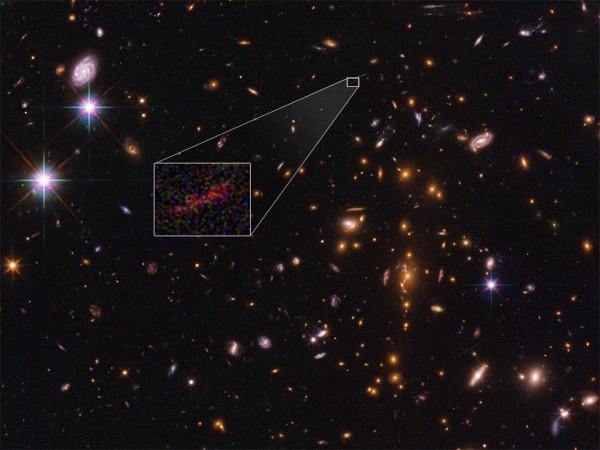
NASA scientists have captured stunning and the clearest image of the farthest known galaxy in the universe. The galaxy, named SPT0615-JD, which was already around when the universe was 500 million years old, was captured after an intensive deep survey of the universe.
Also Read: Stunning image taken by Hubble Space Telescope captures collision of 2 galaxies
Distant galaxies usually look like red dots because of their small size and distances, but thanks to a phenomenon called gravitational lensing, researchers were able to amplify images to get a clear picture of SPT0615-JD.
In this case, the "gravitational field of a massive foreground galaxy amplified the light from background galaxy but also smeared the image of it into an arc."
Brett Salmon of the Space Telescope Science Institute in the US said: "No other candidate galaxy has been found at such a great distance that also gives you the spatial information that this arc image does.
"By analysing the effects of gravitational lensing on the image of this galaxy, we can determine its actual size and shape."
Hubble's Reionisation Lensing Cluster Survey (RELICS) and companion S-RELICS Spitzer programme discovered the farthest known galaxy in the universe. "RELICS was designed to discover distant galaxies like these that are magnified brightly enough for detailed study," Dan Coe, Principal Investigator of RELICS, said.
Salmon combined the Hubble and Spitzer data and estimated the lookback time to SPT0615-JD was 13.3. billion years. Initial analysis suggests that SPT0615-JD weighs around 3 billion solar masses and spreads across 2,500 light years. This galaxy is considered to be a young galaxy that formed shortly after the Big Bang.
According to Salmon, the galaxy is at such a point in space beyond which Hubble cannot detect objects. But scientists believe it is just the beginning "for the upcoming NASA James Webb Space Telescope's powerful capabilities."
He said: "This galaxy is an exciting target for science with the Webb telescope as it offers the unique opportunity for resolving stellar populations in the very early universe."

















